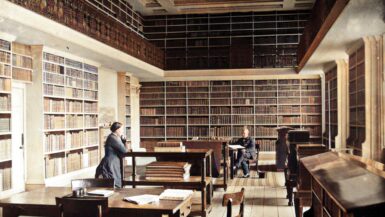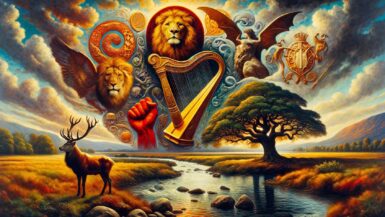The 1901 and 1911 Irish Census Records are invaluable resources for anyone looking to trace their Irish ancestry or delve into the fascinating world of Irish history. These comprehensive records offer a detailed snapshot of the lives of those living in Ireland at the turn of the 20th century. This article will guide you through the process of navigating these records, with expert tips, advice, and resources to help you uncover your own unique Irish heritage.
The Importance of the 1901 and 1911 Irish Census Records
The 1901 and 1911 Irish Census Records are particularly significant for genealogists and historians because they are the earliest complete census records available for Ireland. Many earlier census records were destroyed in the 1922 fire at the Public Record Office during the Irish Civil War. Consequently, these two sets of records provide a wealth of information on the lives of Irish citizens at the turn of the century.
Accessing the Census Records
Online Resources
The 1901 and 1911 Irish Census Records are available online, free of charge, through the National Archives of Ireland’s website (www.census.nationalarchives.ie). This searchable database allows you to input specific search criteria, such as names, ages, addresses, and occupations, to help you locate your ancestors in the records.
Physical Archives
For those who prefer a hands-on approach, the National Archives of Ireland in Dublin holds physical copies of the 1901 and 1911 Irish Census Records. These can be viewed by appointment at the Reading Room. Additionally, many local libraries and archives throughout Ireland hold copies of the records for their respective counties.
Understanding the Census Records
The 1901 and 1911 Irish Census Records are comprised of four main forms:
Form A: Household Return
Form A is the primary document used by genealogists when researching the census records. It contains information on each member of a household, including their name, age, sex, occupation, relationship to the head of the household, marital status, religion, and birthplace.
Form B1: House and Building Return
Form B1 provides information on the physical characteristics of the house or building in which the family lived. This includes the type of dwelling (house, apartment, etc.), the number of rooms, and the construction materials used.
Form B2: Out-Office and Farm-Steadings Return
Form B2 records information on any outbuildings or farmsteads associated with the property, such as stables, barns, or sheds.
Form N: Enumerator’s Abstract
Form N is a summary of the census data collected by the enumerator (the person responsible for gathering the information in a specific area). This form provides an overview of the total number of inhabitants, houses, and outbuildings in a particular district.
Tips for Searching the Census Records
When searching the 1901 and 1911 Irish Census Records, keep the following tips in mind to maximize your chances of success:
- Use wildcard characters (* and ?) to account for variations in spelling or abbreviations. For example, searching for “O’Ne*l” will return results for “O’Neil,” “O’Neill,” and “O’Neal.”
- Be flexible with dates, as ages and birth years may be inaccurately reported or estimated.
- Consider searching for neighbors or other family members if you cannot locate your direct ancestor, as they may be living nearby or in the same household.
Making Sense of the Data
Once you have located your ancestors in the census records, you will need to interpret the information provided. Some key areas to focus on include:
Occupations
Occupations listed in the census records can provide insight into the social and economic status of your ancestors. Keep in mind that some occupations may have different titles or terminology in the early 20th century than they do today.
Place Names
Place names in the census records can be challenging to decipher, as they may be written in Irish Gaelic, anglicized, or abbreviated. Consult historical maps, gazetteers, or other reference materials to help identify the correct location.
Family Relationships
The relationships listed in the census records can help you build your family tree and uncover previously unknown relatives. Pay close attention to the relationships between household members and the head of the household, as well as any boarders or lodgers living with the family.
Additional Genealogical Resources
In addition to the 1901 and 1911 Irish Census Records, there are numerous other resources available to help you trace your Irish ancestry, including:
- Civil registration records (births, marriages, and deaths)
- Parish records (baptisms, marriages, and burials)
- Land records (such as the Griffith’s Valuation and Tithe Applotment Books)
- Military records
- Newspapers and obituaries
Troubleshooting Common Problems
If you encounter difficulties while searching the census records, consider the following strategies to overcome common problems:
- Try alternate spellings or phonetic variations of names, as the enumerator may have recorded them differently.
- Check neighboring districts or counties, as boundaries may have changed or families may have moved.
- Search for additional records or resources to corroborate or supplement the information found in the census records.
Preserving and Sharing Your Findings
Once you have successfully navigated the 1901 and 1911 Irish Census Records and uncovered your family’s history, it is essential to preserve and share your findings with others. Some ways to do this include:
- Creating a digital or physical family tree
- Writing a family history narrative or book
- Sharing your discoveries with family members or online genealogy communities
- Donating copies of your research to local archives or libraries for future generations to access
By following the guidance provided in this comprehensive article, you will be well-equipped to explore the 1901 and 1911 Irish Census Records and uncover the unique stories of your Irish ancestors.





Leave a reply